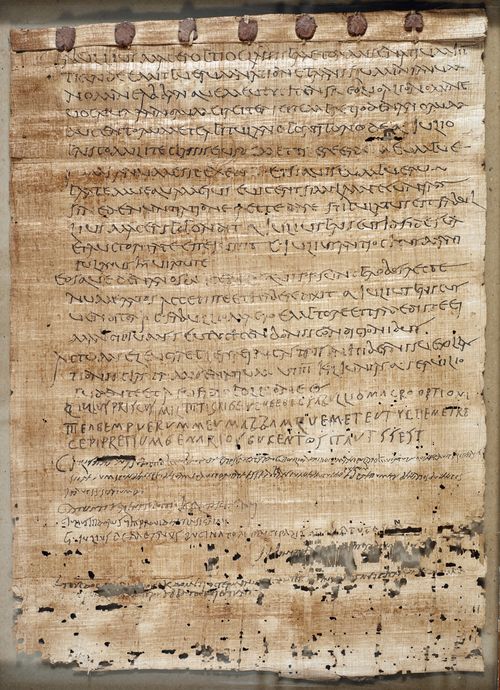Posted on the
Medieval manuscripts blog and on a number of mailing lists
28 October 2013
Precious Papyri
The British Library holds one of the most significant collections of
Greek papyri in the world, including the longest and most significant
papyrus of the Aristotelian Constitution of Athens, unique copies of major texts such as Sophocles’ Ichneutae,
and the Egerton Gospel, as well as a wide range of important
documentary papyri from Oxyrhynchus, Aphrodito, Hibeh, Tebtunis, and the
Fayum. The Department of Manuscripts in the British Museum was at the
forefront of the new discipline of papyrology at the turn of the
nineteenth century, and many of our predecessors are well-known to
anyone who has ever consulted a text preserved on papyrus: Kenyon, Bell, and Skeat, to name just three.
 Latin deed of the sale of a slave boy, Papyrus 229 (P. Lond. I 229)
Latin deed of the sale of a slave boy, Papyrus 229 (P. Lond. I 229)
Today, we are happy to announce that selected key papyri have been
digitised and are now available to view on Digitised Manuscripts, along
with completely new catalogue descriptions. Five papyri are available
online now, and two more items will appear in the coming weeks (watch
out for a separate post here on our blog!). The items now online are:
Papyrus 229 (P. Lond. I 229): Latin deed of the sale of a slave boy, retaining the seals of its signatories
Papyrus 1531 (P. Oxy. IV 654/P. Lond. Lit. 222): Fragment of the Gospel of Thomas, in Greek
(A note on shelfmarks: The British Library’s method of referencing
papyri is according to inventory number. This does not always correspond
to the number by which the papyrus is more widely known in its
published catalogue, be that P. Lond., P. Oxy., or other. The catalogue
entries on Digitised Manuscripts give full cross-references for papyri
for ease of use. Further details on how to match inventory and
catalogue numbers can be found in the British Library’s Manuscripts Collection Reader Guide 4: The Papyrus Collections.)
- Cillian O'Hogan









 Stumble It!
Stumble It!

No comments:
Post a Comment